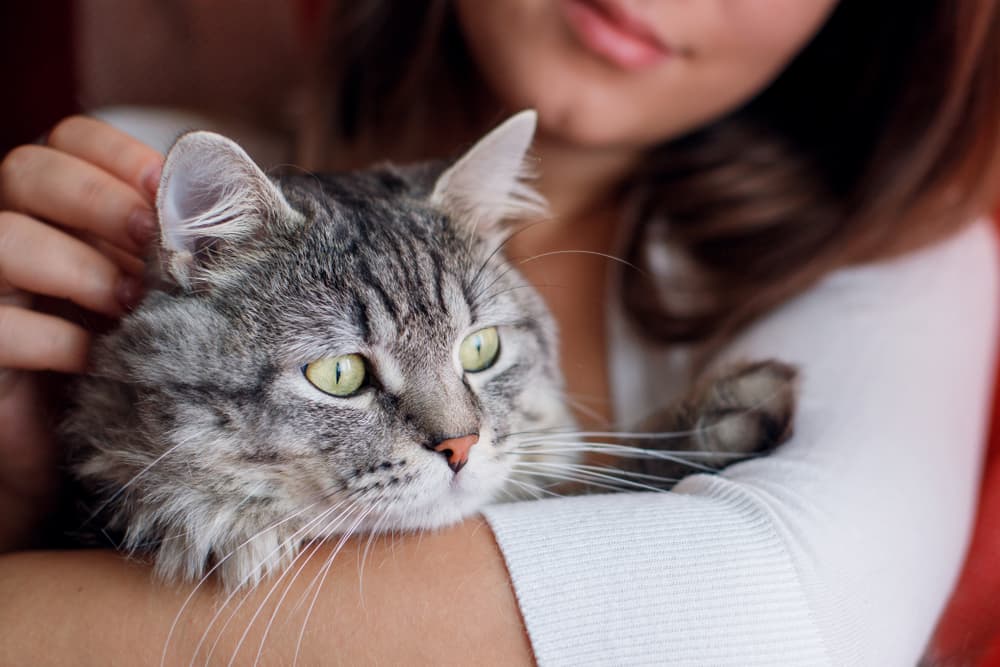What Colors Can Cats See?
Cats are known for their striking appearance and unique abilities. One of the most fascinating aspects of their biology is their visual perception. Unlike humans, cats have a different set of photoreceptors in their eyes, which allows them to see the world in a distinct way. In this article, we’ll delve into the fascinating world of cat vision, exploring what colors cats can see and how their visual system differs from ours.
The Science of Cat Vision
Cats have a visual system that is adapted to their nocturnal lifestyle. Their eyes are designed to function well in low light conditions, which is essential for hunting and navigating in the dark. However, their visual abilities are not limited to just night vision; they also have some unique characteristics that set them apart from humans.
Photoreceptors: Cats have two types of photoreceptors in their retina: rods and cones. Rods are responsible for low-light vision, while cones are involved in color vision. Unlike humans, cats have a higher concentration of rods compared to cones, which enhances their ability to see in dim light.
Sensitivity to Light: Cats have a much higher sensitivity to light than humans. Their eyes are designed to detect even the faintest light, which is crucial for navigating in the dark. This sensitivity is due to the structure of their retinas, which contain a greater number of photoreceptors.
Color Vision: Cats have a limited ability to see colors compared to humans. They have only two types of cones, which are sensitive to blue and yellow wavelengths. This means that cats can see blues and yellows, but they are unable to distinguish between different shades of these colors. Additionally, they are less sensitive to red and green wavelengths, which are the primary colors that humans can see.
How Cats See Colors
Cats have a unique visual system that allows them to see the world in a different way from humans. Here’s a breakdown of what colors cats can see:
Blue: Cats can see blues very well. This is because their eyes are sensitive to short-wavelength blue light. They can distinguish between different shades of blue, which is essential for hunting and navigating in the wild.
Yellow: Cats can also see yellows, but they are less sensitive to this color compared to blues. They can distinguish between different shades of yellow, but they may not be able to see the same range of yellows that humans can.
Red and Green: Cats are less sensitive to red and green wavelengths. They can see these colors, but they are not as vivid or distinct as they are to humans. This means that cats may not be able to see the same range of reds and greens that humans can.
Black and White: Cats are very sensitive to black and white. They can see these colors very well, which is essential for hunting and navigating in low-light conditions.
The Evolution of Cat Vision
The evolution of cat vision is closely tied to their nocturnal lifestyle. Over millions of years, cats have adapted to the dark by developing a visual system that is highly sensitive to light. This adaptation has allowed them to thrive in environments where other animals might struggle to see.
Adaptations: Cats have developed several adaptations to enhance their visual abilities. These include:
- Large pupils: Cats have large pupils that allow more light to enter their eyes, improving their ability to see in low light.
- Reflective layer: Cats have a reflective layer in the back of their eyes, which helps to bounce light back into the retina, enhancing their ability to see in dim light.
- Highly sensitive rods: Cats have a higher concentration of rods in their retina, which allows them to detect even the faintest light.
The Impact of Cat Vision on Behavior
The unique visual abilities of cats have a significant impact on their behavior. Here are some key points:
Hunting: Cats’ ability to see in low light is crucial for hunting. They use their exceptional night vision to stalk and capture prey in the dark.
Navigation: Cats’ highly sensitive eyes help them navigate through their environment, even in low-light conditions.
Social Behavior: Cats use their visual abilities to communicate with each other. They can see each other’s body language and facial expressions, which is essential for social interactions.
Conclusion
Cats have a unique visual system that is adapted to their nocturnal lifestyle. Their eyes are highly sensitive to light, and they can see blues and yellows very well. However, they are less sensitive to red and green wavelengths, and they are unable to see the same range of colors that humans can. Understanding the science behind cat vision helps us appreciate the remarkable adaptations that have allowed these animals to thrive in the dark.
FAQ
Q: Can cats see colors?
A: Yes, cats can see colors, but they are limited to blues and yellows. They are less sensitive to red and green wavelengths.
Q: How do cats see in the dark?
A: Cats have a highly sensitive visual system that allows them to see in low light conditions. They have large pupils, a reflective layer in the back of their eyes, and a higher concentration of rods in their retina.
Q: Can cats see the same range of colors as humans?
A: No, cats are unable to see the same range of colors as humans. They are limited to blues and yellows and are less sensitive to red and green wavelengths.
Q: How does cat vision affect their behavior?
A: Cat vision has a significant impact on their behavior. It helps them hunt, navigate, and communicate with each other.
Table
| Color | Sensitivity of Cats |
|---|---|
| Blue | High |
| Yellow | High |
| Red | Low |
| Green | Low |
| Black | High |
| White | High |
For more information on cat vision, visit the Wikipedia page: Wikipedia: Cat VisionThis article provides a comprehensive overview of cat vision, exploring the science behind their unique visual abilities and how they affect cat behavior.



